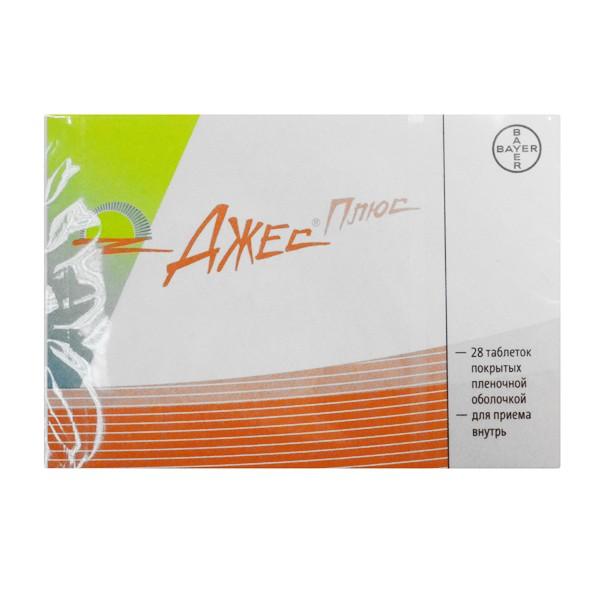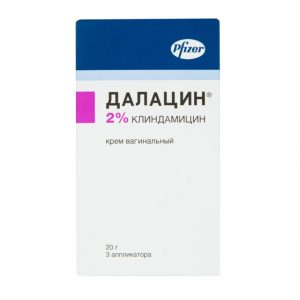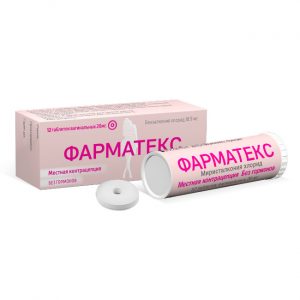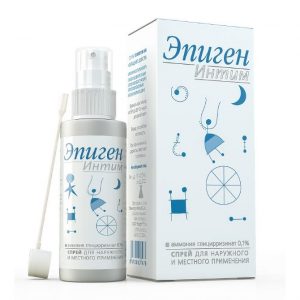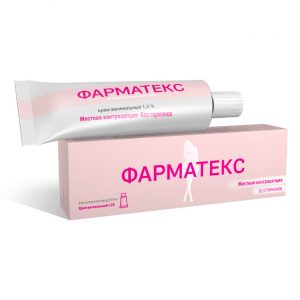Description
Release form
Film-coated tablets
Packaging
Set of tablets of two types, 28 pcs.
Pharmacological action
Jess Plus is a low-dose monophasic oral combined estrogen-progestogen contraceptive drug, including active tablets and auxiliary vitamin tablets containing calcium levomefolate.
The contraceptive effect of Jess Plus is mainly due to the suppression of ovulation and increase the viscosity of cervical mucus.
In women taking combined oral contraceptives (COCs), the cycle becomes more regular, the soreness, intensity and duration of menstrual bleeding decreases, resulting in a reduced risk of iron deficiency anemia. There is also evidence of a reduction in the risk of endometrial and ovarian cancer.
Drospirenone contained in Jess Plus It has an antimineralocorticoid effect and helps to prevent hormone-dependent fluid retention, which can manifest itself in a decrease in body weight and a decrease in the likelihood of peripheral edema. Drospirenone also has antiandrogenic activity and helps to reduce acne (blackheads), oily skin and hair. This effect of drospirenone is similar to the action of natural progesterone produced in the female body. This should be considered when choosing a contraceptive, especially for women with hormone-dependent fluid retention, as well as for women with acne and seborrhea. With proper use, the Pearl index (an indicator that reflects the number of pregnancies in 100 women who use contraceptives during the year) is less than 1. If the pill is missed or if it is used incorrectly, the Pearl index can increase.
The acidic form of calcium of levomefolate is identical in structure to the natural L-5-methyltetrahydrofolate (L-5-methyl-THF), the main folate form found in food. The average plasma concentration of people who do not use folic acid-rich foods is about 15 nmol / L.
Levomefolate, unlike folic acid, is a biologically active form of folate. Due to this, it is absorbed better than folic acid. Levomefolate is indicated to meet increased demand and provide the necessary folate content in a woman’s body during pregnancy and during lactation. The introduction of calcium levomefolate in the composition of an oral contraceptive reduces the risk of developing a fetal neural tube defect if a woman becomes pregnant unexpectedly, immediately after stopping the use of contraception (or in very rare cases, when using oral contraception).
Pharmacokinetics
Drospirenone
Absorption. When taken orally, drospirenone is rapidly and almost completely absorbed. After a single oral administration of Cmax of drospirenone in blood plasma, equal to 35 ng / ml, is achieved after 1-2 hours. Bioavailability ranges from 76 to 85%. Compared to taking drospirenone on an empty stomach, eating does not affect its bioavailability.
distribution. After oral administration, a two-phase decrease in the level of the drug in serum is observed with T1 / 2, respectively (1.6 ± 0.7) h and (27.0 ± 7.5) h. Drospirenone binds to serum albumin and does not bind to sexually binding globulin hormones (SHBG), or corticosteroid-binding globulin (CSH). Only 3-5% of the total concentration of a substance in serum is present as free hormone. The increase in SHBG induced by ethinyl estradiol does not affect the binding of drospirenone to blood plasma proteins. The apparent average Vd is (3.7 ± 1.2) l / kg.
Metabolism. Following oral administration, drospirenone is extensively metabolized. Most plasma metabolites are represented by acid forms of drospirenone, which are formed without the involvement of the cytochrome P450 system. To a minimum, the isoenzyme of cytochrome P4503A4 is involved in the metabolism of drospirenone, drospirenone is able to reduce the concentration of the enzyme in the blood plasma and the activity of isoenzymes of cytochrome P4501A1, P4502C9 and P4502C19 in vitro.
Withdrawal. The metabolic clearance rate of drospirenone in blood plasma is (1.5 ± 0.2) ml / min / kg. Unchanged, drospirenone is excreted only in trace amounts. Drospirenone metabolites are excreted through the digestive tract and kidneys in a ratio of approximately 1.2: 1.4. T1 / 2 for excretion of metabolites – about 40 hours.
Equilibrium concentration. During the first course use of the drug Css of drospirenone in blood plasma, about 60 ng / ml is achieved from the 7th to the 14th day of the drug. There was an increase in the concentration of drospirenone in blood plasma by about 2 3 times (due to cumulation), which was due to the ratio of T1 / 2 in the terminal phase and the dosing interval. A further increase in the concentration of drospirenone in blood plasma is noted after 1-6 courses of drug use, after which no increase in concentration is observed.
Impaired renal function. The concentration of drospirenone in blood plasma upon reaching equilibrium was comparable in women with mild renal impairment (Cl creatinine – 50 80 ml / min) and in women with intact renal function (Cl creatinine> 80 ml / min). Nevertheless, in women with moderate renal impairment (creatinine Cl – 30-50 ml / min), the average concentration of drospirenone in blood plasma was 37% higher than in patients with intact renal function. There was no change in the concentration of potassium in the blood plasma when using drospirenone.
Impaired liver function. In women with moderate hepatic impairment (Child-Pugh class B), AUC is comparable to that in healthy women with similar Cmax values in the phases of absorption and distribution. T1 / 2 of drospirenone in patients with moderate impaired liver function was 1.8 times higher than healthy volunteers with preserved liver function.
Patients with moderate hepatic impairment showed a drop in drospirenone clearance of about 50% compared with women with preserved liver function, and there were no differences in the concentration of potassium in the blood plasma in the studied groups. No changes in potassium concentration were observed even in the case of a combination of factors predisposing to its increase (concomitant diabetes mellitus or treatment with spironolactone).
Ethinyl estradiol
Absorption. After oral administration, ethinyl estradiol is rapidly and completely absorbed. Cmax – about 33 pg / ml – is achieved within 1-2 hours. The drug undergoes a presystemic metabolism in the liver, its bioavailability when taken orally is on average about 60%. Simultaneous food intake in some cases is accompanied by a 25% decrease in the bioavailability of ethinyl estradiol.
distribution. The concentration of ethinyl estradiol in blood plasma decreases in 2 phases, T1 / 2 of ethinyl estradiol in the second phase is about 24 hours. Ethinyl estradiol has non-specific but strong binding to plasma albumin (about 98.5%) and induces an increase in plasma concentration of SHBG. Estimated Vd is about 5 L / kg.
Metabolism. Ethinyl estradiol undergoes presystemic conjugation in the liver and in the mucosa of the small intestine. The main pathway of ethinyl estradiol metabolism is aromatic hydroxylation with the formation of numerous metabolites, which are both in a bound and unbound state. The rate of excretion of ethinyl estradiol is about 5 ml / min / kg.
Withdrawal. Ethinyl estradiol is excreted only in the form of metabolites by the kidneys and through the gastrointestinal tract in a ratio of 4: 6 with T1 / 2 for about 24 hours.
Equilibrium concentration. The equilibrium state is reached in the second half of the course of treatment, the concentration of ethinyl estradiol in the blood plasma increases by about 1.4 2.1 times.
Ethnicity. The influence of ethnicity on the pharmacokinetics parameters was studied in studies with single and multiple dosing of drospirenone and ethinyl estradiol in healthy Caucasian women, as well as in Japanese women. The influence of ethnicity on the pharmacokinetics of drospirenone and ethinyl estradiol has not been established.
Calcium Levomefolate
Absorption. After ingestion of calcium, levomefolate is rapidly absorbed and included in the body’s folate pool. After a single oral intake of 0, 451 mg of levomefolate calcium after 0.5 1.5 hours, Cmax becomes 50 nmol / L above the initial concentration.
distribution. The pharmacokinetics of folate has a two-phase nature: a pool of folates with fast and slow metabolism is determined. A pool with a fast metabolism is probably represented by folates that are newly ingested, which is consistent with T1 / 2 calcium levomefolate, which is about 4-5 hours after a single oral dose of 0.451 mg. A slow metabolism pool reflects the conversion of polyglutamate folate, T1 / 2 of which is about 100 days. External folates and folates that undergo the intestinal-hepatic cycle provide a constant concentration of L-5-methyl-THF in the body.
L-5-methyl-THF is the main form of folate in the body, in which they are delivered to peripheral tissues to participate in cellular folate metabolism.
Metabolism. L-5-methyl-THF is the main folate transported form in plasma. When comparing 0.451 mg of calcium levomefolate and 0.4 mg of folic acid, similar metabolic mechanisms were established for other significant folates. Coenzymes of folates are involved in 3 main conjugate cycles of metabolism in the cytoplasm of cells. These cycles are necessary for the synthesis of thymidine and purines, precursors of deoxyribonucleic (DNA) and ribonucleic (RNA) acids, as well as for the synthesis of methionine from homocysteine and the conversion of serine to glycine.
Withdrawal. L-5-methyl-THF is excreted by the kidneys unchanged and in the form of metabolites, as well as through the digestive tract.
Equilibrium concentration. The equilibrium state of L-5-methyl-THF in blood plasma after oral administration of 0.451 mg of calcium levomefolate is achieved after 8-16 weeks and depends on its initial concentration. In red blood cells, Css is reached at a later date due to the life span of the red blood cells, which is about 120 days.
Indications
contraception, intended primarily for women with symptoms of hormone-dependent fluid retention
contraception and treatment of moderate acne (acne vulgaris)
contraception in women with folate deficiency
contraception and severe syndrome.
Contraindications
Jess Plus is contraindicated in the presence of any of the conditions / diseases listed below. If any of these conditions / diseases develop for the first time during administration, angina pectoris) currently or in the history of
the presence of multiple or severe risk factors for venous or arterial thrombosis
migraine with focal neurological symptoms currently or in the history of
diabetes mellitus with vascular complications
liver failure and normal liver disease (normal liver disease)
severe and / or acute renal failure
liver tumors (benign or malignant) currently or in a history of
detected hormone-dependent e malignancies (including genital or mammary glands) or suspicion of them
vaginal bleeding unclear origin
pregnancy or suspected it
lactation
presence of rare hereditary lactose intolerance, lactase deficiency or glucose-galactose malabsorption.
WITH CAUTION
The potential risk and expected benefit of using Jess Plus should be evaluated in each individual case with the following diseases / conditions and risk factors: risk factors for thrombosis and thromboembolism: smoking, obesity, dyslipoproteinemia, controlled arterial hypertension, non-focal migraine symptoms, uncomplicated heart valve defects, hereditary predisposition to thrombosis (thrombosis, myocardial infarction or cerebrovascular accident at a young age, one of the next of kin)
has other diseases in which peripheral circulation disorders can occur: diabetes mellitus without vascular complications, systemic lupus erythematosus, hemolytic-uremic syndrome, Crohn ² ¢s disease and ulcerative colitis, sickle cell anemia, superficial vein phlebitis hereditary angioedema
hypertriglyceridemia
liver disease, not related to contraindications
disease that first occurred or worsened during pregnancy or against the background of previous use of sex hormones or pruritus associated with cholestasis, cholelithiasis, otosclerosis with hearing impairment, porphyria, herpes pregnant, Sydenham chorea)
postpartum period.
Use during pregnancy and lactation
Pregnancy
The drug is contraindicated during pregnancy. If pregnancy is detected while taking Jess Plus, the drug should be discontinued immediately. Data on the results of taking Jess Plus during pregnancy is limited, and does not allow any conclusions to be drawn about the negative effects of the drug on pregnancy, the health of the fetus and the newborn. At the same time, extensive epidemiological studies did not reveal an increased risk of developmental defects in children born to women who took COCs before pregnancy or teratogenicity in cases of COCs taken by negligence in early pregnancy. No specific epidemiological studies have been conducted with Jess Plus.
Lactation
The drug is contraindicated during lactation. Taking COCs can reduce the amount of breast milk and change its composition, therefore, their use is not recommended until the termination of breastfeeding. A small amount of sex hormones and / or their metabolites can be excreted in milk, but there is no evidence of their negative effects on the health of the child.
Composition of
1 active combination tablet contains:
active ingredients:
drospirenone (micronized) 3 mg, ethrdylestradiol
claderate, micronized
(calculated on ethinyl estradiol microfluoride 0.4 mg) (mg 0.2) Substances:
lactose monohydrate – 45.329 mg
MCC – 24.8 mg
croscarmellose sodium – 3.2 mg
hyprolose (5 cP) – 1.6 mg
magnesium stearate – 1.6 mg
film coat:
pink lacquer – 2 mg or (alternatively): hypromellose (5 cP) – 1.0112 mg, m krogol 6000 – 0.2024 mg talc – 0.2024 mg of titanium dioxide – colorant 0.5580 mg ferric oxide red – 0.026 mg.
1 vitamin supplement tablet contains:
active substance:
calcium levomefolate (micronized) 0.451 mg,
excipients:
lactose monohydrate – 48.349 mg
MCC – 24.8 mg
croscarmellose sodium – 3.2 mg
hyprolysis (5 cP) – 1.6 mg
magnesium 6 mg,
film coating:
light orange lacquer – 2 mg or (alternatively): hypromellose (5 cP) – 1.0112 mg, macrogol 6000 – 0.2024 mg talc – 0.2024 mg titanium dioxide – 0, 5723 mg iron oxide yellow oxide – 0.0089 mg iron oxide red oxide – 0.0028 mg.
Dosage and administration
Inside, in the order indicated on the package, every day at approximately the same time, without chewing, with a little water.
Take 1 tablet. per day, continuously, for 28 days. Reception of tablets from the following packaging begins immediately after completion of the previous one.
Starting to take Jess Plus
Taking Jess Plus begins on the first day of your menstrual cycle (i.e., on the first day of your menstrual bleeding).
Recommendations for vomiting and diarrhea
In case of vomiting or diarrhea up to 4 hours after taking the tablets, absorption may not be complete and additional measures should be taken to prevent unwanted pregnancy.
Use in selected patient groups
Children. The effectiveness and safety of Jess Plus as a contraceptive have been studied in women of reproductive age. It is assumed that the effectiveness and safety of the drug in post-puberty up to 18 years are similar to those in women after 18 years. The use of the drug before the onset of menarche is not shown.
Elderly patients. Jess Plus is not used after menopause.
Impaired liver function. The drug is contraindicated in women with severely impaired liver function.
Impaired renal function. The drug is contraindicated in women with severe impaired renal function and in acute renal failure.
Side effects of
The most common adverse reactions that have been reported in connection with the use of the drug Jess are the following:
– nausea, pain in the mammary glands, irregular uterine bleeding, bleeding from the genital tract of unspecified origin (more than 3% of women who use drug according to indications Contraception ‘ and Contraception and treatment of moderate forms of acne / acne vulgaris /)
– nausea, pain in the mammary glands, irregular uterine bleeding (more than 10% of women using the drug for the indication “ Contraception and treatment of severe premenstrual syndrome).
Serious adverse reactions are arterial and venous thromboembolism. The following is the frequency of adverse reactions reported during clinical trials of Jess and Jess Plus drugs for contraindication, as well as for contraception and moderate acne (ac = vulgaris) and contraception and treatment for severe premenstrual syndrome ( n = 289) for the drug Jess. Within each group allocated according to the frequency of occurrence, adverse reactions are presented in order of decreasing severity. The frequency of adverse events was classified as follows: frequent (? 1/100 and
From the side of the central nervous system: often – migraine.
Mental disorders: often – mood swings, depression / depressed mood infrequently – decrease or loss of libido.
from the cardiovascular systems: rarely – venous or arterial thromboembolism (approximate frequency according to the results of epidemiological studies covering a group of combined oral contraceptives. Frequency bordered on a very rare one. The term includes leduyuschie disease entities: an occlusion of peripheral deep vein thrombosis and embolism / pulmonary vascular occlusion, thrombosis, embolism and infarction, myocardial infarction, cerebral infarction and hemorrhagic stroke).
From the digestive system: often – nausea.
From the skin: frequency unknown – erythema multiforme.
From the reproductive system and mammary glands: often – pain in the mammary glands, irregular uterine bleeding, bleeding from the genital tract of unspecified origin.
Adverse events were classified using the MedDRA (Medical Regulatory Activity Dictionary) dictionary. Different MedDRA terms reflecting the same symptom have been grouped together and presented as the only adverse reaction to avoid weakening or blurring the true effect.
Drug Interactions
Interaction of oral contraceptives with other drugs can lead to breakthrough uterine bleeding and / or decrease the reliability of contraception.
Interactions that decrease the effectiveness of Jess ® Plus
Effect on hepatic metabolism. The use of drugs that induce microsomal liver enzymes can lead to increased clearance of sex hormones. Such drugs include: phenytoin, barbiturates, primidone, carbamazepine, rifampicin, possibly also oxcarbazepine, topiramate, felbamate, griseofulvin and drugs containing St. John’s wort perforated. HIV protease inhibitors (e.g. ritonavir) and non-nucleoside reverse transcriptase inhibitors (e.g. nevirapine) and their combinations can also potentially affect liver metabolism.
Effect on enterohepatic recirculation. According to some studies, some antibiotics (such as penicillins and tetracycline) can reduce the intestinal-hepatic estrogen recirculation. thereby reducing the concentration of ethinyl estradiol.
During the administration of drugs that affect microsomal liver enzymes, and within 28 days after their withdrawal, an additional barrier method of contraception should be used.
While taking antibiotics (with the exception of rifampicin and griseofulvin) and within 7 days after their withdrawal, the barrier method of contraception should be additionally applied. If the period of application of the barrier method of contraception ends later than the hormone-containing pink tablets in the package, you should skip taking the remaining auxiliary light orange tablets and start taking Jess ® Plus from the new package without interruption in taking the tablets.
Interactions that reduce the effectiveness of calcium levomefolate
Effect on folate metabolism. Some drugs reduce the concentration of folate in the blood or decrease the effectiveness of levomefolate calcium by inhibiting the enzyme dihydrofolate reductase (e.g. methotrexate, trimethoprim, sulfasalazine and triamteren) or by decreasing the absorption of folates (e.g. cholestyramine) or by unknown mechanisms (e.g. antiepileptic drugs, carbenes: , phenobarbital, primidone and valproic acid).
Effect on CPC metabolism (enzyme inhibitors). The main metabolites of drospirenone are formed in plasma without the participation of the cytochrome P450 system. Therefore, the effect of inhibitors of the cytochrome P450 system on the metabolism of drospirenone is unlikely.
The effect of CPC or calcium levomefolate on the activity of other drugs
CPC can affect the metabolism of other drugs, which leads to an increase (for example, cyclosporine) or a decrease (for example lamotrigine) in their concentration in blood plasma and tissues.
Based on interaction studies, as well as studies involving female volunteers taking omeprazole, simvastatin and midazolam as test substrates, it can be concluded that the effect of drospirenone at a dose of 3 mg on the metabolism of other drugs is unlikely.
Folates can change the pharmacokinetics or pharmacodynamics of certain drugs that affect folate metabolism, such as antiepileptic drugs (phenytoin), methotrexate or pyrimethamine, which may be accompanied by a decrease (mainly reversible, provided that the dose that affects the metabolism of folate metabolism is increased) of their therapeutic effect. The appointment of folates during treatment with such drugs is recommended mainly to reduce the toxicity of the latter.
Overdose
There have been no reports of overdoses of Jes Plus.
Symptoms: nausea, vomiting, spotting vaginal discharge or metrorrhagia (more common in young women).
Treatment: no specific antidote, symptomatic treatment should be performed. Calcium levomefolate and its metabolites are identical to folates that are part of natural products, the daily intake of which does not harm the body. The intake of levomefolate calcium at a dose of 17 mg daily (a dose 37 times higher than that contained in 1 tablet of the drug Jess Plus) for 12 weeks was well tolerated.
Storage conditions
The product should be stored out of the reach of children at a temperature not exceeding 25 ° C.
Shelf life
3 years.
Deystvuyushtee substance
Drospirenone, tinilÑstradiol, Kalytsiya Levomefolinat
Terms and conditions
prescription
dosage form
tablets
Prescription
For women, For women of childbearing age
Bayer Pharma AG, Germany
